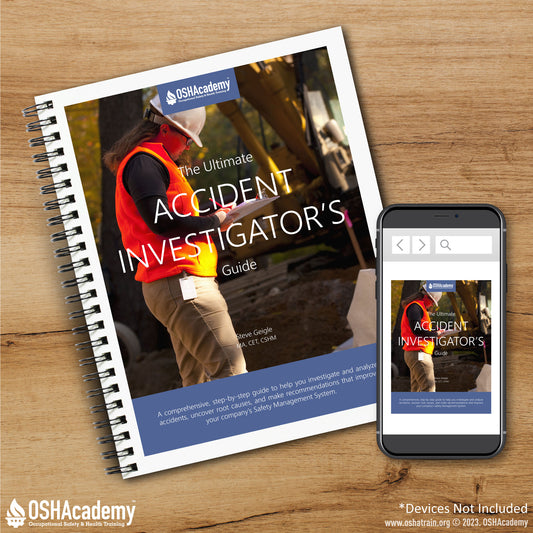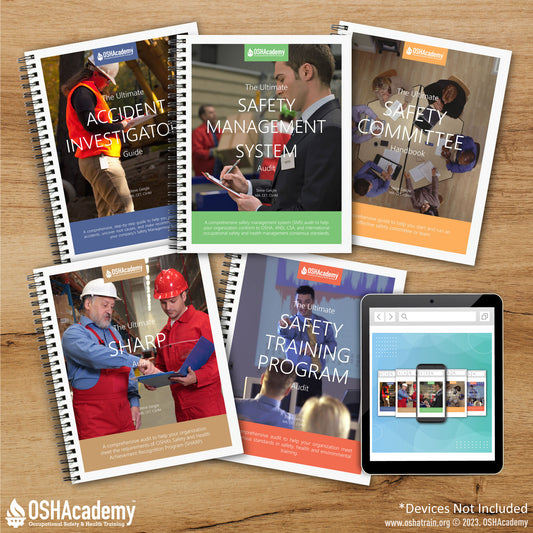
From Hazard to Hero: Kevin's Quest for a Safer Workplace
Share
By Abbie Geigle
Kevin's Concern
Kevin was a tall, middle-aged man with salt and pepper hair, always wearing his safety glasses and carrying a clipboard as he walked through the factory floor. As the safety manager at a mid-sized manufacturing business specializing in automotive parts, he took his job very seriously. Kevin's warm personality and genuine care for his coworkers made him well-respected and admired by everyone at the company. He was approachable, an excellent listener, and always sought the best for both the employees and the organization.
The company had been in business for over two decades and had a long-standing reputation for producing high-quality products. However, in recent years, they had been facing increased competition, which led to a higher focus on production rates, sometimes at the expense of safety. Kevin had noticed this trend and couldn't ignore the growing concern gnawing at the back of his mind. Workplace accidents were on the rise, and this not only threatened the well-being of his coworkers but also the company's financial stability due to increased workers' compensation claims and potential regulatory fines.
One day, after witnessing yet another incident that could have been prevented, Kevin made a decision. He would do everything in his power to ensure the safety of his fellow employees and protect the company he had grown to love. He knew that conducting a comprehensive safety audit would be the first step toward making a significant positive change. This would allow him to identify all the hazards associated with each specific job or task and make recommendations to eliminate or reduce exposure to these hazards, creating a safer work environment for everyone.
The Safety Audit Process
To ensure a thorough and unbiased safety audit, Kevin assembled a diverse safety committee composed of representatives from various departments, including production, maintenance, engineering, and human resources. He believed that including multiple perspectives would lead to a more comprehensive understanding of potential hazards and better solutions.
The safety committee members gathered for their first meeting, where Kevin outlined the goals and methodology of the safety audit. He divided the factory floor into zones and assigned each committee member specific zones to inspect. They were provided with checklists to guide their hazard identification process and encouraged to interview employees working in their designated zones to gather additional insights.
Over the next several weeks, the safety committee faced several challenges. Some employees were initially hesitant to share their concerns, fearing negative consequences or extra workload. To overcome this, Kevin and the committee fostered an environment of trust and emphasized the importance of open communication. They reassured employees that their input was vital for improving workplace safety and that no one would be penalized for sharing their observations.
Another challenge was the sheer complexity of the manufacturing processes and the multitude of potential hazards. The safety committee needed to prioritize the most critical issues without neglecting less obvious risks. To address this, they grouped hazards into categories, such as immediate risks, long-term risks, and ergonomic concerns. They also sought external expertise when needed to ensure the most accurate evaluation of the hazards and their potential impact on employees.
As the safety audit progressed, the committee members held regular meetings to discuss their findings, share insights, and collaborate on solutions. They combined their knowledge and experiences to develop practical recommendations that would minimize hazards without negatively affecting productivity.
Once the safety audit was complete, Kevin compiled a detailed report of the findings and presented it to the company's leadership. He emphasized the importance of prioritizing employee safety and the potential long-term benefits, including increased productivity, reduced workers' compensation claims, and a healthier work environment. Armed with the safety committee's recommendations, Kevin was ready to take the necessary steps to make a meaningful change in the workplace.
To learn more about how to create a safety audit at your workplace, read "Conducting a Safety Audit & Implementing Recommendations."
Implementing Changes

With the company leadership on board, Kevin and the safety committee were eager to begin implementing the recommended changes. They knew that collaboration and open communication would be crucial in addressing each concern effectively. Kevin reached out to floor supervisors and building engineers, who played a critical role in making the necessary adjustments.
Working closely with the floor supervisors, Kevin and the safety committee identified the most critical hazards that required immediate action. They developed a phased approach to ensure a smooth transition while minimizing disruptions to production. The floor supervisors played an essential role in communicating the upcoming changes to their teams, addressing questions and concerns, and providing valuable feedback on the implementation process.
The building engineers were instrumental in addressing more complex and technical aspects of the recommended changes, such as redesigning workstations, modifying equipment, and updating electrical systems. They worked hand-in-hand with the safety committee to develop practical and cost-effective solutions, ensuring that safety improvements didn't compromise the company's productivity.
As the implementation process began, the safety committee faced several challenges. One of the major obstacles was managing the inevitable resistance to change. Some employees were skeptical about the new safety measures and reluctant to alter their routines. To overcome this, Kevin and the safety committee organized training sessions and town hall meetings to explain the rationale behind the changes, highlighting the benefits for both the employees and the company.
Another challenge was securing the necessary financial resources for some of the more costly safety improvements, such as replacing outdated machinery. Kevin worked closely with the company's financial department to develop a budget plan that allowed for these essential investments while minimizing the impact on the company's bottom line. He also explored potential grants and incentives available for businesses investing in workplace safety improvements.
Throughout the implementation process, the safety committee continuously monitored and evaluated the effectiveness of the changes. They gathered feedback from employees and supervisors, making adjustments as needed to ensure the best possible outcome. With perseverance, effective communication, and strong collaboration, Kevin and his safety committee overcame the challenges and successfully implemented the recommended changes to create a safer work environment for everyone.
Training and Documentation
As the implementation of the recommended changes progressed, Kevin and the safety committee realized that proper training was essential for employees to understand and embrace the new safety measures. They decided to utilize a combination of OSHAcademy courses and on-site training by floor supervisors to provide comprehensive and site-specific instruction.
Kevin researched the available OSHAcademy courses and identified those most relevant to the hazards and safety concerns at their facility. Some of the courses included OSHAcademy Course 108: Personal Protective Equipment: Basic, Course 112: Introduction to Safety Supervision, and Course 154: Machine Safeguarding: Basic. These courses provided employees with a solid foundation in safety principles and best practices.
While OSHAcademy courses were valuable for general knowledge, Kevin recognized the importance of on-site training by floor supervisors to address site-specific safety concerns. The supervisors had in-depth knowledge of the unique processes and hazards within their respective departments, making them the ideal trainers for their teams. They also had established relationships with their employees, which fostered trust and better communication during the training sessions.

To ensure compliance with regulatory requirements and to demonstrate the company's commitment to employee safety, Kevin and the safety committee established a robust documentation process. They collected OSHAcademy course completion certificates and maintained records of all on-site training sessions, including the date, attendees, topics covered, and the name of the supervisor conducting the training. This documentation would be invaluable in the event of an audit or inspection by regulatory agencies, proving the company's dedication to safety and continuous improvement.
The combination of OSHAcademy courses and on-site training by supervisors ensured that employees received well-rounded instruction tailored to their specific work environment. This approach was vital in reinforcing the newly implemented safety measures, ultimately contributing to a safer and more efficient workplace for everyone.
Positive Outcomes

Several months after the safety audit and implementation of the recommended changes, the company began to see remarkable improvements. The number of workplace accidents had significantly decreased, leading to a wide range of positive outcomes for the company, including financial savings and increased productivity.
One of the most apparent financial benefits was the reduction in workers' compensation claims. With fewer accidents occurring, the company experienced a substantial decrease in the cost of covering medical expenses and lost wages for injured employees. Additionally, fewer accidents meant reduced downtime, allowing the company to maintain a steady production schedule and increase overall efficiency.
The safety improvements also led to reduced legal costs. The company was no longer facing potential lawsuits or costly fines from regulatory agencies. In fact, during a recent OSHA inspection, the company passed with flying colors, receiving praise for their commitment to safety and continuous improvement. This successful inspection not only boosted employee morale but also enhanced the company's reputation within the industry.
Capitalizing on the success of their safety program, the company began promoting their robust safety practices as a cornerstone of their workplace culture. They highlighted their commitment to safety in marketing materials and recruitment efforts, setting them apart from competitors and attracting top talent in the industry.
The company's leadership recognized that the investment in safety had not only protected their employees but also contributed to the organization's long-term success. Kevin's tireless efforts and the safety committee's dedication had created a safer work environment, positively impacting every aspect of the business. The company was now well-positioned for continued growth and success, with safety as a guiding principle at the heart of their operations.



